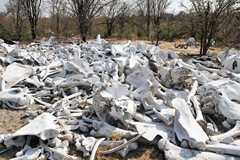
Elephants Graveyard? Well yes, but it's
actually part of a hunting camp where the
butchered skulls of elephants shot by trophy
hunters for their ivory were left to be picked
clean by scavengers, and then bleached white
by the sun
In this article I am discussing the shooting of animals for fun. Not for genuine reasons of HWC or Man eating or culling or simply for food. Nor am I looking at professional poaching. Where I’ve used figures to back up my arguments I’ve tried to find the latest available.
More specifically I am focused mostly on killing endangered species for money, which is basically legalised poaching, although the ethical argument applies to all animals, scarce or common.
Let's look at the Arguments FOR trophy hunting first:
Ok - that's those arguments out of the way.
Now let's talk about the arguments AGAINST trophy hunting.
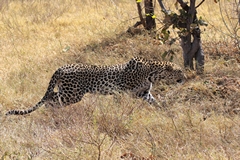
Leopards are considered vulnerable in the
IUCN Red List. Legally hunted in 12 African
Countries. Most countries do not reach quota
as actual numbers are too scarce. Numbers
are decreasing. Some such as Amur leopard
and snow leopard are in critically low numbers
Conservation
One of the commonest arguments used by hunters is that trophy hunting fees generate a lot of money for the local communities where it takes place and trophy hunting also provides funds for conservation purposes. They also state that trophy hunting helps to exclude poachers.
The hunters usually present a few caveats to precede their arguments such as – “poorly managed trophy hunting can cause population declines” and “ with effective governance trophy hunting is effective in helping to save a species”.
These two statements immediately highlight a fundamental problem, in that the conditions are hardly ever met. Management is bad, quotas are not based on science, and there is a lot of opportunity for bribery so animals that should not be taken, are taken, and quotas are not observed.
Quotas are inherently arbitrary numbers based on wild arsed guesses about the numbers of animals in an area and the sustainability of killing some of them. There is little real understanding of what can and can’t be killed. For instance, less than 2% of the snow leopard's range has been properly surveyed; guesses are made that there may be 10000 animals at best. How can sustainable hunting quotas of an endangered species be calculated on these assumptions?
Selous GR (Now Nyrere NP in Tanzania) was given over to 88% trophy hunting and 12% Photo tourism. The trophy hunters did such a good job of keeping poachers out that its elephant population declined from 70,000 in 2006 to 13000 in 2014. So much for the 'discourages poachers' argument.
So what about the money generated ?
Trophy hunters have long claimed that hunting of endangered animals is good for conservation. Pro-hunting group Safari Club International (SCI) recently published a paper stating simply that trophy hunting supports conservation of African wildlife and habitat.
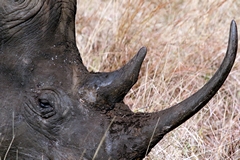
The rhino's keratin horn is it's death warrant,
both from poaching and from trophy hunters
with masculinity issues. We have reduced their
global numbers to about 27300 including
5500 critically endangered black rhinos and
possibly 18500 white rhinos. Yet both these
two species are hunted
SCI estimated the economic benefits of trophy hunting in eight African countries was $USD 426 million, and that trophy hunting, directly and indirectly, supports 53,000 jobs. However the study was reviewed by Economists at Large for the Humane Society International and they concluded that more realistic estimate is less than $USD 132 million per year, that the contribution from trophy hunting to employment is likely in the range of 7,500 – 15,500 jobs, the total economic contribution of trophy hunters is at most about 0.03% of GDP, and that foreign trophy hunters make up less than 0.1% of tourists on average.
Another question to ask is – how much of the hunting revenue ends up with locals, after the companies who organise it have taken their cut? Most of it is paid for outwith the destination countries anyway since most hunters are from overseas. Some estimates say as little as 3% finds its way into the local economy.
In comparison, in 2018, wildlife tourism accounted for $120.1bn of Global GDP, compared to $23bn attributed to the illegal wildlife trade. The World Travel & Tourism Council (WTTC) launched a study to coincide with World Elephant Day, and found that viewing and experiencing animals in their natural habitat comprised 4.4 per cent of all direct tourism GDP last year. Wildlife tourism also directly created over 9 million jobs across the world and indirectly supported 21.8 million jobs.
Trophy hunting generates paltry sums of cash for the local economy compared to eco tourism. Around $30 million a year in Tanzania as opposed to to a direct contribution from eco tourism of $1.98 billion which is 3.8% of GDP in 2017 with a forecast of 9.5% growth annually. In 2018, a total of 1.49 million tourists visited Tanzania, generating $2.43 billion for economy.
To recap:
Trophy hunting $30 million
Eco-tourism $2.43 billion
(Figures: World Travel and Tourism Council)
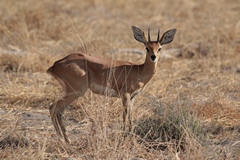
No animal is safe from the trophy hunter's
bullet. Safari Club International even has a
'Pygmy Antelopes of Africa' award for those
big brave hunters who dare shoot fifteen
different species of them
There is no case here to continue trophy hunting since it generates irrelevant amounts money and causes massive and irrevocable damage.
A thousand people can shoot a lion with a camera day after day, but only one can kill it, and its value is then lost for ever.
Ask yourself , does a hunter have the right to deny my right to see this animal? Was it right that Walter Palmer was allowed to kill Cecil the lion in 2015, in the most cruel and painful way.
Hunting conserves land
The argument is that if land is not used for hunting then it will be taken over for local use such as cattle grazing and bushmeat poaching. I am not saying this will not happen anywhere, but it is an assumption not supported by much factual evidence and we can learn to live with nature instead of fighting it all the time. I am also questioning whether hunting stops bushmeat poaching, since it takes place even in National parks which are relatively well protected.
Land can be conserved in other ways.
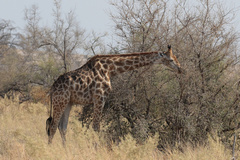
Why would anyone get pleasure from killing
one of these graceful creatures? Yet giraffe
numbers have plummeted by 30% in thirty
years. There are about 111,000 left. Most
subspecies are endangered
Through paying community members cash in hand for not over-exploiting it. Examples such as Carbon Tanzania demonstrate that such payments (for carbon credits, for example) can be enormously successful for conserving wild spaces. There’s no reason why locals could not be paid just to leave the land alone or protect it from a central government pot, generated by eco tourism, particularly since this sector is on the rise.
Examples:
1. In areas surrounding the Masai Mara in Kenya, land is rented from local tribes by photo safari companies. They put a camp in place and part of the cash generated by tourism goes to the local people. Jobs are created in the tourist industry as well.
2. The Northern Rangelands Trust in Kenya is a community conservancy membership organization. Its mission is “to develop resilient community conservancies, which transform people’s lives, secure peace and conserve natural resources. “ Part of its remit is to Manage sustainable businesses linked to conservation in 39 conservancies covering 42,000 sq kilometers of northern and coastal Kenya. It is successfully integrating traditional farming methods (cattle sheep and goats) with eco tourism and providing facilities, jobs and security for local people, without a bullet being fired. Wildlife is thriving because there is a high value placed on wildlife which is benefitting the locals.
Selective shooting – hiding behind the excuse of Human Wildlife Conflict
Here’s why shooting elephants for reasons of Human Wildlife Contact issues is almost always a nonsense : much of the reasoning by African governments and justification by hunters for opening elephant hunting is that problem elephants cause crop damage to farmers. Trophy hunting has nothing to do with this. Shooting trophy elephant bulls does nothing to reduce problem elephant numbers or prevent human-wildlife conflict. Hunting occurs in the dry season and targets large bulls, often nowhere near farming areas, while elephant crop raiding coincides mostly with the rainy season and the perpetrators tend to be young bulls with lesser ivory, or family herds. The variation in the timing, space use, age and sex of problem elephants suggest hunting has a limited effect on solving human-elephant conflict. HWC is mostly just an excuse to try and justify the killing for pleasure.
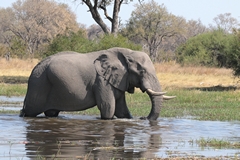
Botswana earmarked 400 elephants to be
killed by trophy hunters in 2020 (prior to the
covid19 pandemic giving them a reprieve).
President Masisi was presented with the
'International Legislator of the Year' award by
none other than Safari Club International.
Considering he tells 'the West' to stay out of his
country's conservation policies it's a bit of a
laugh to say the least
Arguments that elephant trophy hunting removes old males that are ‘past their prime’ and ‘no longer breeding’ are entirely false and deceptive in the case of elephant hunting. We know from long-term studies and genetic paternity tests that male elephants show a different pattern of reproductive output to most mammals. Large, older bulls are the most reproductively active. Bulls aged between 40 and 54 years are the most likely to sire calves.
HWC problems with lions can be addressed without resort to guns. Better security for the lion’s prey species will help as there will be less likelyhood of them taking domestic cattle etc. Predator proof bomas for livestock are a good way to reduce HWC. Keeping cattle out of designated wildlife reserves and parks would help to reduce the incidence of predation. I have seen large herds of cattle in Meru NP in Kenya. They compete with the lions prey base and the lions are then more likely to target them. A system similar to the Ewaso lion guardians in Northern Kenya can be established to warn villages in advance of possible trouble from predators.
Shooting lions with the biggest manes similarly undermines pride functionality. If a pride male is shot, then a new male will soon take over and immediately kill all the younger cubs, to bring the females into oestrus so he can father his own. The genetic selection effects are pronounced, since the biggest lion with best genes has been removed, possibly along with some of his cubs, and at that stage we are tinkering with the natural evolution of the species, since we are unnaturally selecting for who will survive and who will not.
Lions have declined precipitously in the wild, down from an estimated 200,000 continent-wide a century ago to just over 20,000 today.
To put things in perspective, lion numbers have dropped by half since The Lion King premiered in theatres in 1994.
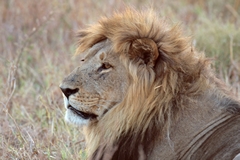
A king surveys part of his ever dwindling
domain. But that's ok because there's less
Kings these days, thanks in part to the
Walter Palmers of this world
Many animals are just too few in number to justify shooting them for any reason whatsoever.
There are many other reasons I could discuss here, and many other species I could comment on, but I recommend anyone who is interested to search the internet for information, as huge amounts have been written about trophy hunting. This page is merely intended to make people aware of the situation and hopefully be concerned enough to seek more in depth knowledge, and possibly do something to encourage trophy hunting to be consigned to the past, where it should reside, if we are now living in a civilised enlightened world.
There are also a whole host of ethical arguments against trophy hunting, and these will be discussed on a forthcoming page.